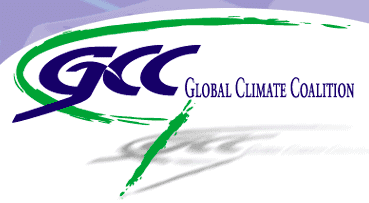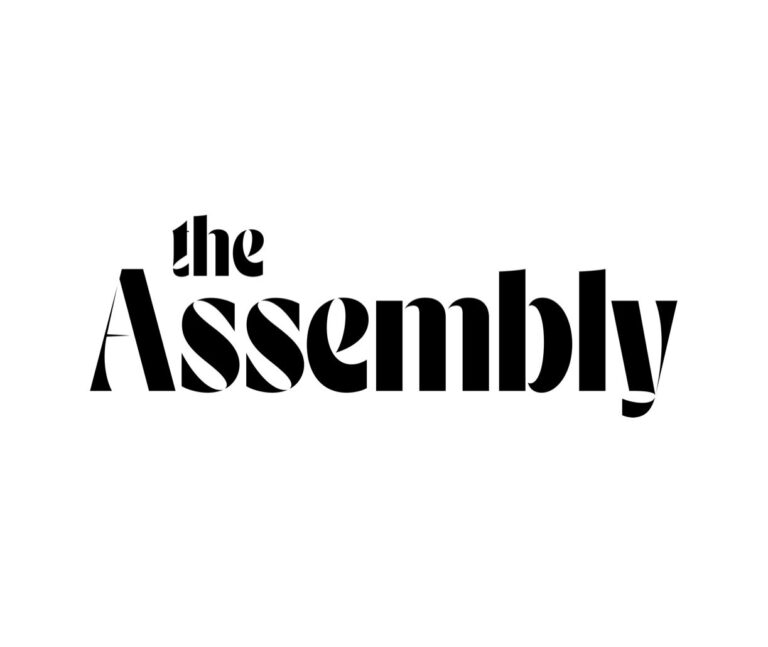Global Climate Coalition documents reveal the electric utility industry’s role in notorious climate denial campaign

Electric utilities played a prominent role in the Global Climate Coalition, an industry group that worked for over a decade to sow doubt about climate change and block efforts to limit greenhouse gas emissions, according to a new collection of documents released last week.
The collection represents the largest publicly available compilation of Global Climate Coalition (GCC) documents to date. The Climate Investigations Center, in collaboration with DeSmog and Climate Liability News, published the documents, which show disturbing new evidence of the GCC’s efforts to influence and undermine the scientific research of the International Panel on Climate Change.
The Global Climate Coalition (GCC) officially shut down in 2002, after many of its industry backers quit amid public opposition to its misleading attacks on science, but it remains relevant today. It was an early source of the climate denial that remains an obstacle to efforts to address climate change in the U.S.
A growing number of lawsuits seek to hold major fossil fuel producers like ExxonMobil liable for climate change-related damages. These lawsuits have been filed by major cities, such as Boulder and New York, as well as communities like crab fishermen who have been impacted by climate change. They all point to the Global Climate Coalition as evidence of how the fossil fuel industry knowingly misled the public about the climate risks of burning fossil fuels, much in the same way that the tobacco industry tried to cover up evidence of the health impacts of smoking.
The fossil fuel industry did not act alone. Automotive, electric utility, and manufacturing interests also backed the GCC and other disinformation campaigns attacking climate science. The electric, industrial, and transportation sectors remain top sources of greenhouse gas emissions in the U.S., because they continue to burn fossil fuels.
The electric utility industry was a leading backer of the Global Climate Coalition
The collection of documents now available on ClimateFiles.com shines a new light on the influential role that the electric utility industry played in the GCC. In 1989, the founding members of the GCC included the Edison Electric Institute (EEI), the main industry association that represents investor-owned electric utilities. EEI is largely funded through payments that utilities recover from their customers’ monthly bills.
Other founding members of the GCC included major electric utility companies like American Electric Power (AEP), Consumers Power Company (now Consumers Energy), Pacific Gas & Electric (PG&E) and Southern Company. The role PG&E played in founding what became the first major industry-backed climate denial campaign is particularly notable, given that today the same utility blames climate change for the California wildfires that helped to drive it into bankruptcy.
PG&E is now asking regulators in California to increase its return on equity, or its profit margin on capital investments, from 10.25 percent – a number in line with industry averages – to an unprecedented 16 percent. PG&E says the increased fire risk means it must increase profits in order to attract investors. The increase would raise customers’ monthly bills by 7 percent.
Southern Company was also there at the founding of the GCC. In 1989, J. Robert Minter of Southern Company wrote to members of the U.S. Senate to solicit meetings with the newly formed GCC.
In 1992, John Shlaes became the executive director of the GCC. Shlaes had previously worked for EEI.
In 1994, Dale Heydlauff of AEP was announced as the GCC’s treasurer. Heydlauff is now AEP’s senior vice president of corporate communications.
A review of the GCC documents found on ClimateFiles.com identified the following utility companies and industry associations that were members of the GCC at some point between its founding 1989 and dissolution in 2002:
- Allegheny Power (now FirstEnergy)
- Ameren
- American Electric Power (AEP)
- American Gas Association
- Arizona Public Service Company (APS)
- Carolina Power & Light (now Duke Energy)
- Cincinnati Gas & Electric Company (now Duke Energy)
- Cinergy (now Duke Energy)
- Consumers Power Company (now Consumers Energy)
- Duke Power (now Duke Energy)
- Duquesne Light Company
- Edison Electric Institute
- Illinois Power Company (now Ameren)
- National Rural Electric Cooperatives Association
- Northern Indiana Public Service Company (NIPSCO)
- Ohio Edison (now FirstEnergy)
- Pacific Gas & Electric (PG&E)
- Pennsylvania Power & Light Company (PPL)
- Southern Company
- TECO Energy
- Union Electric Company (now Ameren)
- Virginia Power (now Dominion Energy)
The Global Climate Coalition’s science committee was stacked with representatives of the electric utility industry
As previously reported by the New York Times, internal documents from the GCC’s Science and Technology Assessment Committee (STAC) have shown how the automotive, electric utility, fossil fuel, and manufacturing industries knowingly misled the public about climate change.
Members of the STAC included representatives of the electric utility industry, some of whom went on to work on other efforts to block action on climate change and other environmental issues after the GCC dissolved.
John McManus represented AEP on the STAC. McManus will retire later this year after serving as the utility company’s vice president of environmental services. He served as the chair of the Utility Air Regulatory Group’s policy and steering audit committee in 2017, according to internal UARG documents published by Politico.
UARG has long fought efforts by the EPA to meet its legal obligation under the Clean Air Act to limit carbon dioxide emissions from power plants. AEP remains a member of UARG.
Mike Stroben represented Duke Power on the STAC, and more recently served as a chair of UARG’s climate change committee. Duke Energy left UARG last month, following Politico’s report exposing the group’s close ties to Bill Wehrum, a top Trump administration at EPA.
Others involved in the STAC included Eric Holdsworth and John Kinsman, who currently work for EEI. Just last month, Holdsworth submitted comments on behalf of EEI on the Trump EPA’s review of Obama-era standards for greenhouse gas emissions from new power plants.
“Electric Companies Are Committed to Clean Energy for Customers; Coal Can and Should Continue to Play an Important Role In a Diverse Energy Mix,” read the heading for one section of EEI’s recent comments to the EPA, which went on to say:
Despite coal’s declining share of power generation, it still plays a vital role in the production of the nation’s electricity, providing more than 30 percent of all the electricity generated in the United States… Importantly, coal-based power is also a 24/7 resource that can provide critical reliability and ancillary services. Standards for new and existing units should provide sufficient flexibility to permit owners and operators to continue to use these units to ensure the provision of affordable, reliable electricity.
Holdsworth and EEI also argued in that same filing against overturning the EPA’s science-based endangerment finding for greenhouse gas emissions, albeit without defending the science that resulted in that finding.
“… if the Endangerment Finding is overturned, the electric power sector could be broadly exposed to tort and nuisance suits brought by citizens and states—as was the case prior to EPA regulation of GHGs,” their comments said.
EEI worried that “uncertainty” about EPA’s ability to regulate carbon emissions “could undermine any potential for generation owners and operators to consider new coal-based generation as a viable option.”
Holdworth is still participating in United Nations conferences on climate change. He met with Mandy Gunasekeara, another Trump political appointees to EPA, to discuss “COP 23” in November of 2017, according to public records obtained by American Oversight.
Emails made public by the Center for Media & Democracy revealed how in 2014, John Kinsman of EEI asked Scott Pruitt to submit an op-ed to the Journal of the Air & Waste Management Association attacking the EPA’s regional haze rule. Kinsman even provided language that could be “cut and paste” into Pruitt’s op-ed.
The GCC-STAC’s meetings also included a “liaison” and observer from the Electric Power Research Institute (EPRI), which does research for the electric utility industry – research that is funded by the nation’s electricity customers and supposed to be in the public interest. Documents reveal that EPRI’s liaison played a role in one of the most notorious examples of the GCC’s efforts to undermine climate science.
In 1996, Chuck Hakkarinen of EPRI faxed a copy of a report “on detection and attribution of climate change” by “Santer et al” to his “GCC-STAC colleagues” – including John Kinsman at EEI.
A few months later the GCC launched an all out attack accusing Ben Santer, a climate scientist at the Lawrence Livermore National Laboratory, and the IPCC of “Scientific Cleansing” at a time when the term “ethnic cleansing” was being used to describe genocidal attacks on minorities in places like Rwanda, and Bosnia-Herzegovina.
Santer’s work was on the GCC’s radar before Hakkarinen’s fax.
“Ben Santer said the first time he interacted with GCC members was during the IPCC plenary meetings held in Madrid in November 1995,” according to Climate Liability News.
The GCC’s attack targeted a key finding of the IPCC’s Second Assessment Report, which found that, “The balance of evidence suggests a discernible human influence on global climate.”
This shouldn’t have come as a surprise to the electric utility industry. A 1984 report prepared for EEI had warned that by 1990, “First detection of carbon dioxide warming trend possible.”
Years earlier, in 1977, Hakkarinen wrote a memo, The CO2 Issue in One Page, for EPRI.
Utilities knew a lot about climate change before they joined the GCC, a fact confirmed by a 1984 report on the issue prepared for the Edison Electric Institute
Some of the GCC documents found in the new collection have been reported on before, including in the Energy & Policy Institute’s 2017 report, Utilities Knew, which can be found below. The EPI report detailed how electric utilities knew about the possible threat of climate change as far back as 1968, but still chose to invest heavily in new coal generation – a top source of carbon dioxide emissions – and disinformation campaigns that targeted climate science and policies in the years that followed.
“This report invites the plaintiffs’ lawyers and state attorneys general who have been going after oil companies to use the same theories against the electric utilities — at least those that rely mostly on coal,” Michael Gerrard, the director of the Sabin Center for Climate Change Law at Columbia University, told Weather.com.
After Utilities Knew was published, EPI obtained a copy of a 50-page 1984 EEI report titled Carbon Dioxide: Potential Emerging Global Hazard. The report offers further confirmation that electric utilities knew a lot about the causes and risks of climate change well before joining the GCC’s disinformation campaign.
“Carbon dioxide levels in the atmosphere have undeniably increased since they began to be measured regularly in 1958,” the report said. “It is now believed they have been increasing since the beginning of the industrial revolution largely due to the burning of fossil fuels.”
“The debate over potential implications of increasing carbon dioxide concentration in the earth’s atmosphere has entered a more conservative phase in which earlier assertions are toned down,” claimed the report, which came at a time when the Reagan administration “openly scorned” scientific concerns about climate change.
Still, the 1984 EEI report found ample evidence to support scientific concerns about climate change, and recommended that the electric utility industry take early action to address the problem.
“The steady accumulation of carbon dioxide in the atmosphere seemed to be a likely candidate for becoming a major environmental issue affecting the electric utility industry,” the report said. “Scientific and technological evidence is steadily growing that the phenomenon is real.”
“The time is ripe, therefore, for the industry, particularly its principal association, the Edison Electric Institute, to look to the future to determine whether there are positive anticipatory strategies to be followed in engaging this new concern,’ it advised.
Even so, the report planted some early seeds of the denial campaigns to come. It quoted one “expert” who described the idea of regulating carbon dioxide emissions as “ludicrous,” and pointed to the “benefits” of CO2 for plant growth.
Utility-backed groups have continued to spread disinformation about climate change in recent years
As noted in the Utilities Knew report, some electric utilities continue to fund special interest groups like the American Legislative Exchange Council (ALEC) and American Coalition for Clean Coal Electricity (ACCCE) that continued to spread disinformation about climate science and oppose limits on CO2 emissions from power plants in recent years.
AEP and Southern Company remain members of ACCCE.
EEI is still a member of ALEC’s Energy, Environment, and Agriculture Task Force, which in late 2018 approved a resolution endorsing the Trump administration’s rollback of key federal climate policies like the Clean Power Plan and Social Cost of Carbon, and applauding Trump’s efforts to withdraw the U.S. from the Paris Climate Agreement.
Since 2009, employees of major utilities have also participated in the Tomorrow’s Leadership Council (TLC) program of the American Coal Council. Employees from AEP, Ameren, APS, Duke Energy, LG&E/KU Energy (PPL), NRG Energy, Southern Company, Vistra Energy, We Energies, Westar Energy, and Xcel have participated in the TLC program, alongside participants representing a who’s who of coal producers and Koch Industries.
The TLC program has produced a steady flow of attacks on climate science, renewable energy, and climate change policies. It’s the source of a 2015 coal communications toolkit that still is promoted on the American Coal Council’s website, which includes a hefty dose of disinformation about climate change.
“CO2 is plant food,” ACC’s communications toolkit claims in a throwback to a climate skeptic talking point that’s been kicking around since the 1980s.
FirstEnergy, another of the utilities that backed the GCC, has gone as far as to lobby for bailouts to keep its uneconomic coal-fired power plants from closing. Two of those plants each emitted over 11 million metric tons of carbon dioxide into the atmosphere in just one year, according to a 2016 report by the Center for Public Integrity.
As long as the electric utility industry continues to cling to fossil fuels and participate in groups that engage in attacks on climate science and solutions, its legacy of denial and contributions to the growing levels of heat-trapping emissions in our atmosphere will continue.
Top image is the Global Climate Coalition’s logo as it appeared on the group’s website in 2002.




